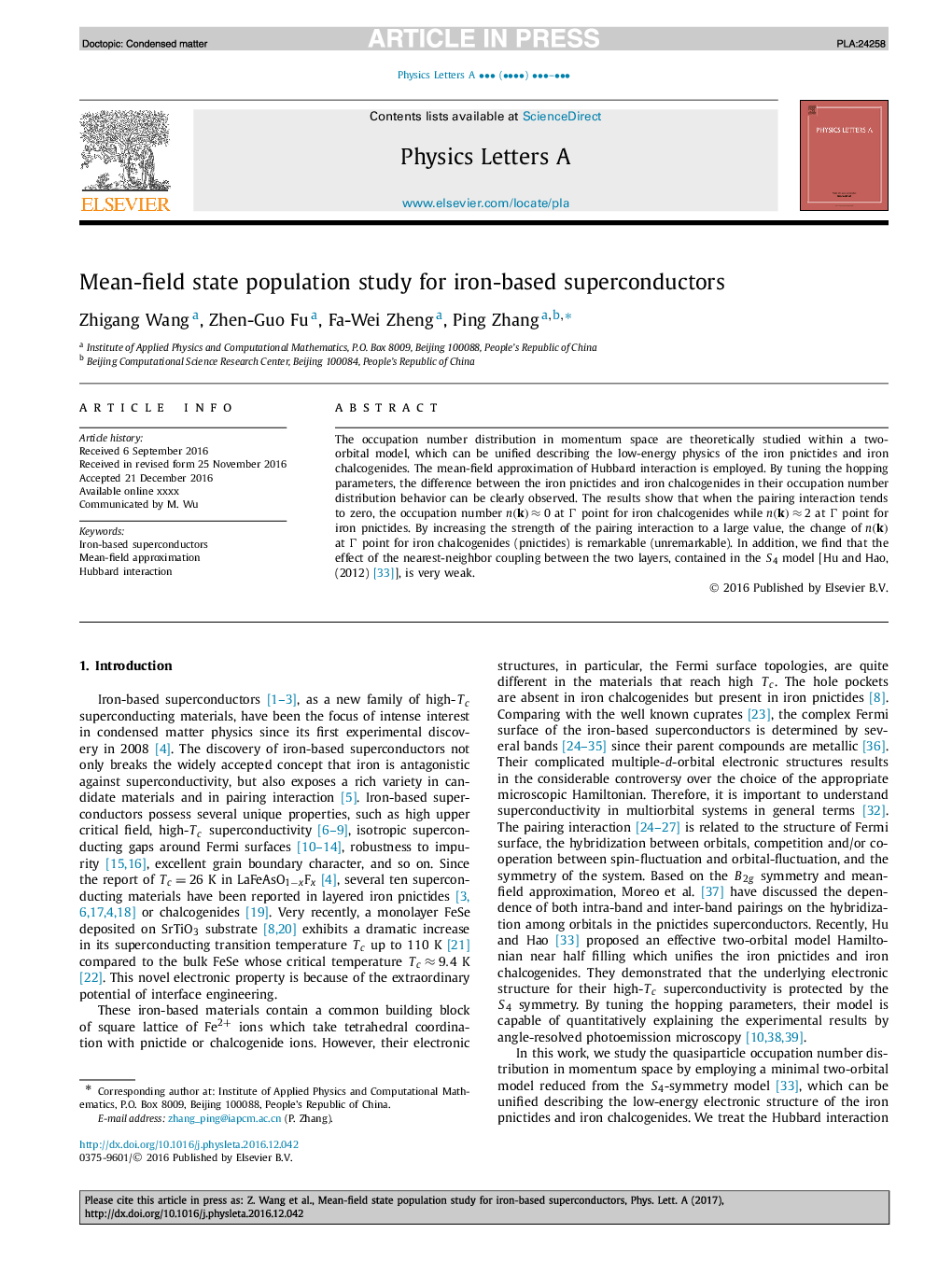| Article ID | Journal | Published Year | Pages | File Type |
|---|---|---|---|---|
| 5496653 | Physics Letters A | 2017 | 5 Pages |
Abstract
The occupation number distribution in momentum space are theoretically studied within a two-orbital model, which can be unified describing the low-energy physics of the iron pnictides and iron chalcogenides. The mean-field approximation of Hubbard interaction is employed. By tuning the hopping parameters, the difference between the iron pnictides and iron chalcogenides in their occupation number distribution behavior can be clearly observed. The results show that when the pairing interaction tends to zero, the occupation number n(k)â0 at Î point for iron chalcogenides while n(k)â2 at Î point for iron pnictides. By increasing the strength of the pairing interaction to a large value, the change of n(k) at Î point for iron chalcogenides (pnictides) is remarkable (unremarkable). In addition, we find that the effect of the nearest-neighbor coupling between the two layers, contained in the S4 model [Hu and Hao, (2012) [33]], is very weak.
Related Topics
Physical Sciences and Engineering
Physics and Astronomy
Physics and Astronomy (General)
Authors
Zhigang Wang, Zhen-Guo Fu, Fa-Wei Zheng, Ping Zhang,
